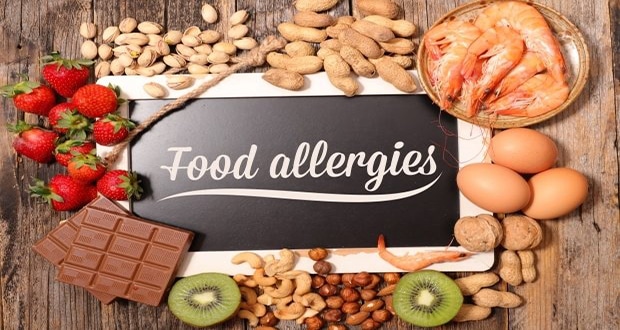How To Deal With Food Allergies
It’s bad enough when you get allergies at the change of the seasons or when you try to show a puppy some love. However, if you’re allergic to any food, then you understand the struggle of avoiding particular foods and certain grocery store aisles.
For those who don’t have a food allergy or suspect they do but aren’t sure, here’s what you need to know about how food allergies develop and how to handle them.
The Basics
Food allergies function in much the same way plant or animal dander allergies do. Your body’s immune system is keeping tabs on all the substances entering your body.
When it identifies (or misidentifies) a substance as dangerous, it reacts. With pollen or cat hair, you’re likely to sneeze.
Sneezing is a mild reaction, but reactions can also include swelling, itching, hives or be as severe as anaphylaxis. Food allergies typically develop in children more than in adults.
However, allergies can come at any age, just as children can grow out of allergies. Your allergies may be related to your family history.
If you already have a food allergy, you’re likely to have more than one.
Identifying Allergies
Do some follow up work, if you notice you’ve been consistently experiencing allergy symptoms. If you’re having mild reactions like redness, runny nose, nausea or vomiting, start tracking the foods you’ve been eating.
Monitor how these foods correlate with the appearance of your symptoms. If you suspect it’s an allergy and you’re worried at the severity it could reach, it’s a good idea to contact your primary doctor for allergy testing as well.
More severe symptoms would include trouble breathing or swallowing, feeling dizzy or ready to pass out or even chest pain. If you or another person experience these, seek out emergency care immediately.
Common Food Allergies
Not sure where to start? These are some of the most common food allergies and a few good tactics for dealing with them, all of which include reading food labels.
- Wheat – If you have a wheat allergy, you should try out some other flours for baking. For example, rice flour or potato starch flour. Be aware gluten-free products can still contain wheat. You should take extra precautions if you work in wheat storage or production facilities.
- Eggs – With an egg allergy, your body will begin to show symptoms not long after eating them. You’ll also need to get good at reading food labels and use egg substitutes in your cooking. You might need to be careful getting flu shots. Until recently they have contained trace amounts of chicken egg proteins.
- Milk – Remember a milk allergy is different than lactose intolerance. Make use of substitutes like rice or almond milk if you’re allergic to this animal byproduct variety.
- Shellfish – Specific symptoms for this can vary significantly between individuals. Your allergy could be to all shellfish while someone else’s relates to only a few specific kinds.
- Peanuts – Peanuts can get sneaky, affecting foods that don’t necessarily have peanut in them but were prepared in a shared area, so stay vigilant when you go out to eat. If you’re allergic to peanuts, you’re more likely to be allergic to tree nuts as well.
- Bananas – This one can also be indicative of other allergies, like other fruits or vegetables or latex. The symptoms you might experience include a rash or sores on the mouth, lips or tongue.
- Avocado – The poor Millennial with an avocado allergy should avoid not just avocado toast and guacamole, but beauty products containing it. Two recommended substitutes if you can’t go without are chayote squash or pureed vegetables like peas or asparagus.
Food allergies are your immune system’s defensive response to a specific eaten food. Food allergies are relatively uncommon, affecting 6 to 8% of children and up to 3% of adults.
They can have symptoms ranging from mild to life-threatening. But by eliminating trigger foods and caring for your overall well-being, you can successfully deal with your food allergies.






